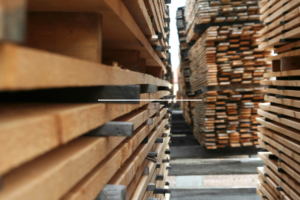 Introduction to Commercial Lumber Estimating:
Introduction to Commercial Lumber Estimating:
Commercial lumber estimating is a critical step in construction projects that require accurate budgeting and resource allocation. From large office buildings to warehouses, using the correct type and quantity of lumber is vital to ensure that the structure is both durable and cost-effective. Estimating commercial lumber is not just about understanding the price of wood; it involves calculating waste, factoring in transportation costs, and accounting for market fluctuations. Inaccurate estimates can result in costly overruns or delays, making it essential for contractors, project managers, and builders to master this process.
In this article, we will explore the essential aspects of commercial lumber estimating, discuss the common pitfalls, and provide strategies to streamline your estimation process.
Understanding the Basics of Commercial Lumber Estimating
Lumber is a foundational material in many commercial construction projects. Whether you’re building retail spaces, apartment complexes, or industrial facilities, the demand for accurate lumber estimates is essential. Here’s why:
- Cost Efficiency: Overestimating leads to wasted resources, while underestimating can delay construction timelines.
- Project Planning: The right estimates allow for better planning, ensuring that lumber is ordered in advance and delivered on time.
- Safety and Compliance: Adequate lumber is required to meet structural safety standards and building codes.
To begin with, accurate commercial lumber estimating requires a clear understanding of the following:
- Project Scope: You need to know the precise dimensions of the building, including the height, length, and width of walls, floors, and roofing systems that require lumber.
- Type of Lumber: There are several types of lumber, including hardwood, softwood, and engineered wood. Each type serves different purposes and comes with a different price range.
- Waste Factor: Every construction project will have some level of waste due to cutting, incorrect measurements, or damaged materials. It’s important to include a waste factor, typically 5% to 10%, in your calculations.
Step-by-Step Process for Commercial Lumber Estimating
Accurate commercial lumber estimating follows a systematic approach. Below is a step-by-step guide to streamline the process:
1. Review Architectural Plans
Start by thoroughly reviewing the architectural drawings and plans. This step helps you determine the quantity of lumber required for various structural elements, such as framing, beams, and joists.
- Take-Off Method: Use the take-off method, which involves measuring the required length, width, and depth of the building’s framing components. This will give you a clearer picture of the total amount of lumber needed.
2. Choose the Right Lumber
Commercial projects require different types of lumber depending on their intended use. Softwood (like pine) is typically used for framing, while hardwood (like oak) is often chosen for finishing work. Engineered wood may also be required for specialized purposes like beams or flooring.
- Tip: Always confirm the lumber’s strength rating and durability to ensure it can handle the structural loads of the commercial building.
3. Factor in Waste and Overages
To avoid shortages during construction, it’s essential to include a waste factor. This accounts for unusable off-cuts, measurement mistakes, and materials damaged during transport or handling. Waste percentages may vary based on the type of wood and the precision required for the project.
4. Include Transportation and Handling Costs
Lumber is heavy and bulky, making transportation a significant part of the cost. For commercial lumber estimating, it’s crucial to factor in transportation and handling expenses, especially if the site is far from suppliers.
- Consider Local vs. Imported Lumber: Local lumber can reduce transportation costs, but imported wood might offer better quality or price, depending on market conditions.
5. Adjust for Market Fluctuations
Lumber prices can fluctuate based on market demand, supply chain issues, or changes in tariff laws. Therefore, it’s a good idea to check recent lumber prices and adjust your estimate accordingly. Some projects may benefit from locking in prices early by signing contracts with suppliers.
6. Use Estimating Software
The complexity of commercial lumber estimating makes it a prime candidate for automation. Specialized estimating software can significantly reduce the time and effort required while improving accuracy.
- Popular Software: Tools like Stack, PlanSwift, and Esticom are popular choices in the construction industry for estimating material costs, including lumber.
Common Pitfalls in Commercial Lumber Estimating
Even with careful planning, mistakes can happen. Below are some common pitfalls to avoid:
- Ignoring Market Fluctuations: Not accounting for market changes can result in underestimating costs, leading to budget overruns.
- Underestimating Waste: Inaccurate waste calculations often result in lumber shortages during the construction phase.
- Relying Solely on Historical Data: While past projects can provide helpful data, it’s essential to update your estimate based on the specific characteristics of the current project.
- Neglecting Project-Specific Requirements: Custom or non-standard architectural designs may require special types of lumber or additional framing that standard estimates might overlook.
Strategies to Optimize Commercial Lumber Estimating
- Stay Updated on Lumber Prices: Always keep track of lumber market trends and consult with suppliers regularly to get the most accurate pricing.
- Build Relationships with Suppliers: Establish strong partnerships with lumber suppliers to benefit from discounts, faster delivery times, and better communication on market trends.
- Use Pre-Engineered Lumber Packages: Many suppliers offer pre-engineered lumber packages tailored for commercial projects. These kits often reduce waste and simplify the ordering process.
- Consult Experts: If you’re new to lumber estimating or working on a complex project, consider hiring an experienced estimator to assist with the process. An expert can help you avoid costly mistakes.
Mastering commercial lumber estimating is essential for the success of any large-scale construction project. Accurate estimates not only keep your project within budget but also help maintain a consistent timeline, reducing the risk of delays caused by material shortages. By following a systematic approach, utilizing specialized software, and staying informed about market changes, you can ensure your commercial lumber estimating process is both efficient and cost-effective.
Incorporating these strategies will save you time, money, and frustration, allowing your projects to run smoothly from start to finish.
Are you looking for the best estimating services in USA?
Look no further than “https://zionestimating.com”
They are offering top-notch services like;
- Construction/cost estimation
- Budget planning
- Material takeoff
- Equipment estimation
and further more!!!
Here are some more information for your convenience:
Phone no. : +1 718-427-9941 || +1 562-383-6177
Email:[email protected]
Visit their blogs and site
https://zionestimating.com for the latest updates and service tips!
